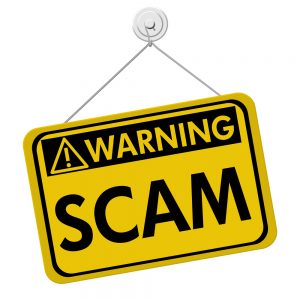Worried about tumbling dollar and looming economic depression?
Feeling like sitting on the sidelines when the gold price is going through the roof?
Want to join the modern ‘Gold Rush’ and invest in physical gold?
If you are a retirement investor with an Individual Retirement Account (IRA), more often than not this is not an option with your present 401(k).
For you, the answer is a Precious Metals IRA, specifically a Gold IRA.
Read on to know more about Precious Metals IRA and Gold IRA. This article will help you understand how to set up a Gold IRA and its features and benefits.
In addition to the information on Gold IRA, you will also find here how to avoid the numerous scams and pitfalls you may encounter as a bullion buyer. For this, you need to be familiar with the terminology used in the industry.
So, let us start with the trade lingo.
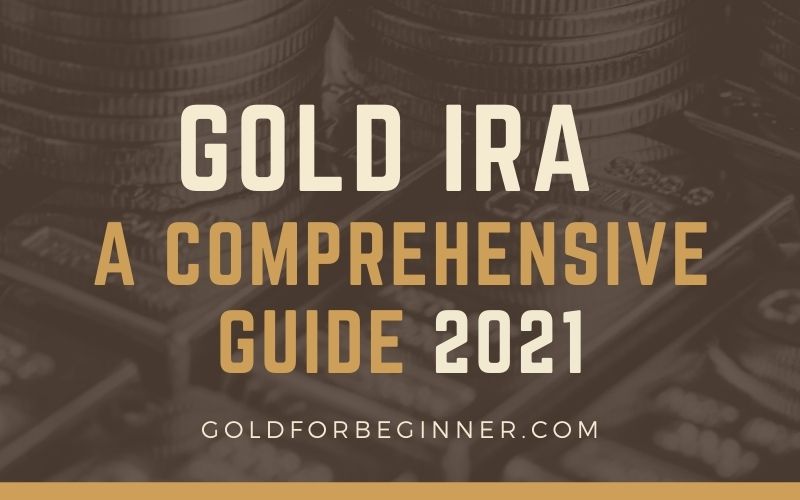
A Glossary of terms used in the bullion market

Ask/Offer: The price at which a dealer offers to sell.
Assay: A test to ascertain and ensure the purity of gold. A gold coin with an ‘assay’ guarantees the stated purity.
Au: Short for Aurum, the Latin word for gold.
Bear market: The description of an investment market like the stock market or precious metals market where the prices are on the decline or soon expected to go down.
Bid: The price at which a dealer is ready to buy.
Bull market: The description of an investment market such as the stock market or precious metals market where the prices are on the rise or soon expected to rise.
Bullion: Bars, coins, ingots, and wafers of precious metals (gold, silver, platinum, and palladium) that meet preset purity standards. These come with no numismatic value and are traded based on their intrinsic value. The American Eagle and Canadian Gold Maple Leaf are the most popular gold bullion coins.
Cert: Short for certified. Evaluated and rated for purity and condition by a third-party grading service.
Chain of integrity: A record of every person or entity who has owned the bullion item. This enables tracking of ownership back to the gold refiner.
Custodian: A financial institution that maintains an investor’s account and holds the account’s investments in electronic or physical form for safekeeping to minimize theft or loss. They ensure that the IRS and governmental regulations are adhered to.
Depository: A facility where things can be deposited for storage and safekeeping.
Diversification: The act of introducing variety in investments for distributing the risk ratio in a portfolio. The goal of diversification is to minimize the impact of the performance of one asset in the overall performance of the portfolio.
Fineness: Purity of a precious metal measured in 1000 parts. The American Gold Eagle has .9167 fineness, meaning, it has 916.7 parts gold and the rest is made up of other metals.
Gold IRA: A specialized type of IRA that allows investors to hold physical gold as IRS approved retirement investment.
Hallmark: A stamp on a precious metal bar or coin to indicate the producer, serial number, weight, and purity of the metal.
Historic coins: Coins minted and released before 1933. Also referred to as ‘Pre-1933’ coins.
IRA: Short for Individual Retirement Account. A tax-advantaged investment tool used by individuals to earmark funds for retirement.
Karat: A measure of purity to denote the fineness of gold on a scale of 1 to 24. 1 karat has 1 part gold and the rest is made up of other metals. 24 karat is pure gold.
Liquidity: A measure of an asset’s ability to quickly convert into cash.
Market value: The price at which a bullion item trades in the market.
Mark-up: The difference in cost of a precious metal item paid by the dealer to the wholesale supplier and the retail price charged from customers.
Melt Value: The intrinsic value of the bullion in melted form.
Mint state: A measure of the condition and quality of a precious metal item. It ranges from MS-61 to MS-70.
Numismatic coins: Coins are valued on rarity, mint date, and condition rather than the actual value of the precious metal content. Also referred to as collector’s coins.
Ounce (oz): A unit of weight. In the precious metals market, an ounce denotes a troy ounce which is equal to 31.1035 grams.
Paper gold: A gold investment of the electronic kind and not in physical form.
Premium: The additional cost of a precious metal item over and above its spot price. It includes the cost of fabrication, distribution, and dealer fees.
Purity: Denotes the content of precious metal in an item. It is expressed in karats or fineness.
Rally: The upward movement of price after a downward trend.
Rollover: Transfer of financial assets from one IRA to another without tax implications.
Safe haven: An investment that retains or increases in value during market duress.
Self-directed IRA: An IRA in which an investor enjoys the freedom to make investment decisions.
Spot price: The fluctuating price of an ounce of the precious metal in the market. It is essentially the wholesale price and is based on trading on OTC and futures markets.
Spread: The difference between the buying price and selling price of a precious metal item set by a dealer to a customer at any given time.
Tax-deferred: Refers to the deferred status of tax on earnings on investments such as interest, dividends, and capital gains until withdrawal.
Yield: A measure of the annual gain/loss on an investment. It is expressed as a percentage.
What Is A Gold IRA?

The conventional IRA allows only ‘paper investments’ such as stocks, mutual funds, bonds, and ETFs. A Gold IRA is designed for retirement account owners who want to invest in physical gold without losing out on the tax advantage of an IRA. It is an IRA approved by the Internal Revenue Service allowing IRA owners to purchase gold bars and coins.
As it involves physical gold bars and coins, Gold IRA necessitates purchasing the assets from a dealer and storing it in a depository. To manage the funds and assets as well as the transactions and to ensure that IRS and other governmental guidelines are followed, a Gold IRA requires a custodian, which is usually a financial institution.
A Gold IRA may be funded by direct transfer or rollover from a regular IRA, depending on the rules and regulations of the regular IRA. However, tax implications are different for these two methods of transfer of funds.
>> Here are 4 reasons why you should invest in gold for retirement
Direct Transfer

Rollover
The rollover process for Gold IRA from a regular IRA involves a partial or full transfer of retirement funds. For a 401(k) retirement account holder, both traditional and Roth, the rollover process involves the account holder taking personal possession of the distribution funds and later depositing the amount in the Gold IRA. The IRS allows a 60-day window to complete this transaction to avoid taxation. Rollover is allowed for an account holder only once in 12 months. This transaction has to be reported to the IRS as it is considered a distribution.
The direct transfer of funds/assets is possible only between IRAs of the same type – two Traditional IRAs or two Roth IRAs. Transfer funds across different types of retirement accounts is a rollover. Such as from 401(k) to Gold IRA. The direct transfer of funds/assets may take a few days but it allows asset transfer, thereby avoiding the potential downside of liquidating assets before transfer. The loss of encashing asset includes termination fees, loss of return in the intervening period, and deferred sales charges if any.
Read more about How To Move 401k To Gold Without Penalty
Who are the players involved in a Gold IRA?
There are four players involved in the setting up and working of a Gold IRA. They are the IRS, an IRA custodian, a gold dealer, and a depository.
IRS

IRA Custodian
To manage any self-directed IRA such as the Gold IRA, a custodian is essential. A custodian can be banks, brokerage firms, trust companies, or credit unions that have the requisite approval from governmental authorities to provide asset custody services to individual investors. The function of a custodian is to hold and manage the IRA assets on behalf of an individual investor.
Custodians are not required to furnish details of gold dealers or depository services. These are left to the discretion of the account holder. However, most established custodians provide this information on request.
Gold Dealer
A dealer in precious metals including gold is required to buy gold as an asset for the Gold IRA. The account owner has the freedom to find their own dealer or request help from the custodian, which they may or may not offer. As the premium on gold charged by different dealers is varied, it is the responsibility of the account holder to find a dealer with whom they are comfortable. Due diligence also rests with the account holder.
Depository
The IRS doesn’t allow retirement account owners to keep the IRA assets in their personal possession. They have to be held in a depository for safekeeping. However, the selection of the depository is with the account owner. The custodian or the dealer may offer help in this regard. Even in this scenario, the due diligence again rests with the account owner.
Depositories offer segregated or non-segregated storage facilities. The fee charged is based on the type of facility chosen, the location of the depository, and the insurance offered.
More tips about choosing Gold IRA custodians.
Understanding the extra costs and special charges

There are three different kinds of prices associated with the sale of gold in the precious metals market. These are spot price, premium, and mark-up.
The Spot Price is the fluctuating price of gold in the bullion exchange. It varies based on supply and demand. This is the base price of gold paid by large suppliers of gold and wholesale buyers like banks and other financial institutions. Most of the transactions in bullion exchanges are futures contracts. In this, the physical delivery of gold happens only at a future date.
These large wholesale buyers and suppliers of gold add a premium to the spot price before selling to gold dealers and retailers. Individual buyers can buy gold from dealers and retailers and not directly from the large suppliers or wholesale buyers. The premium is typically in the range of 1% – 5%. It mostly depends on supply-demand, market conditions, the price outlook for gold, and prior arrangement with the dealer/retailer.
The dealer/retailer adds another markup to the price before selling the gold to individual buyers. The price after markup is the final price for individual buyers. For example, if the dealer buys bullion at a premium of 4% above the spot price and sells at 8% above the spot price, the markup is 4%. the markup generally varies in the range of 5% and 15%, though it can go as high as 20%.
As a general rule, it is not wise to pay more than 10% above spot price when buying gold for an IRA. However, the market conditions and outlook of gold need to be factored in before making a decision.
Each gold transaction, both purchase and sale, invites a transaction fee from the IRA company. And, the wire transfer of the purchase amount from the company to the dealer entails a fee.
In addition to the special charges for buying gold, setting up and operating a Gold IRA entails extra costs like a one-time setup fee, annual custodian fee, storage fee, and cash-out costs.
How to choose a custodian, dealer, and depository
Before choosing a custodian, dealer, and depository, you need to aware of the kind of choices available to you as an investor. it is advisable to weigh the pros and cons of the options available and pick out the ones most suitable for your own personal needs.
Custodian
The role of a custodian in a Gold IRA is that of a trustee and manager of the retirement funds. Selecting a custodian based on the recommendation of a trusted acquaintance is alright as long as you have done a background check of your own. Here are a few points that will come useful for that.
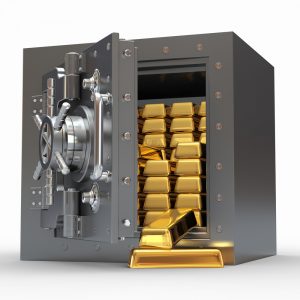
Only custodians approved by the IRS to operate self-directed IRAs are allowed to handle Gold IRAs.
Sliding scale fees vary along with the market value of gold stored in the IRA, while flat-rate, as the name suggests remains constant irrespective of the variations in the price of gold. From an investor's point of view, flat-rate is the better choice.
Some custodians offer a flat-rate storage option. This will give a better idea of the overall annual charges for the Gold IRA. Others give you a choice of depositories to consider. In this case, the cost of storage depends on the depository you choose, which may be a flat-rate or sliding scale.
As a new investor in Gold IRA, you most probably would not be aware of the various aspects to consider when choosing a depository, such as safety and cost-effectiveness. It may not be always advantageous to be given the freedom to choose a depository. As you have already vetted the trustworthiness of the custodian, it would be better to take their advice in this regard.
Custodian companies are awarded ratings by rating agencies and business directories like the Better Business Bureau, Business Consumer Alliance, Yellow Pages, Trustlink, Google+, and Yelp. A company with more satisfied clients will have a better rating.
Dealer
Selecting a dealer to buy gold for your Gold IRA is tricky. With the various costs and innumerable trade jargon, they are bound to confuse you, even if you are well -prepared for it. Though the market price of gold is displayed on their website, the actual price you will be paying is well-hidden and much more. Despite all this, you need to have a dealer to buy gold for your Gold IRA. The better prepared and aware you are, the less chance of being duped and getting caught in scams.
Here is a checklist for a dealer.
As mentioned earlier, the IRS allows only approved bullion items to be included in a Gold IRA. Besides, if you are specific about what you want in your retirement portfolio, you need to confirm that the dealer has that on offer.
Be careful of such dealers. They may try to sell you numismatic coins or unapproved bullion products. It is better to steer clear of hard-hitting sales pitches, even if seem genuine.
Many dealers have this service available for their clients. If not offered, you will have to find a company and open a Gold IRA before making the purchase.
Many top-notch dealers offer storage solutions for their clients, including offshore ones such as in London, Hong Kong, or Singapore. A dealer who is willing to go that extra mile for the benefit of their clients by partnering with depositories is worth considering. You may get a better deal on the annual charges when using this arrangement than doing it on your own.
This is important, especially if you are setting up the IRA independently. Choose a dealer who offers trouble-free delivery of gold purchased directly into your Gold IRA.
This is an important indication of the trustworthiness of the dealer. Again, if the spread is high, you may end up with a huge loss if you want to sell the gold at a later date. Look for a dealer offering a fair spread.
Just as in the case of the IRA company, a dealer with more satisfied clients will have a better rating.
Required Minimum Distribution (RMD)
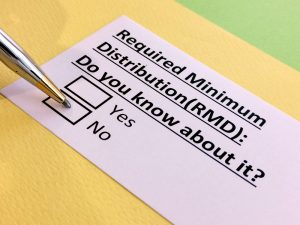
The RMD is a precautionary measure against retirees using a retirement account as a tax-free savings account. The RMD is calculated by dividing the previous year’s fair market value of the account by life expectancy. The account owner is allowed to withdraw more than the stipulated RMD.
Some qualified IRAs allow account owners the choice to defer the start of the RMD until actual retirement, even if they are past the age of 72 years. Roth IRAs do not come under the ambit of RMD as the taxes are already paid.
In the case of a Gold IRA owner, RMDs pose extra hassles. If the account doesn’t have enough free amount for RMD payout, the account owner would be forced to sell a part of the bullion even if it incurs a loss. This situation can be avoided by maintaining sufficient balance for RMD withdrawal in other traditional IRAs.
Allocation of gold in your Gold IRA
How much is too much? Or better still, how much is right? These are the common questions faced by investors. It is easy to be dazzled by the glitter of gold, especially in a bullish market. Even the most inexperienced investor should understand that putting all the eggs in one basket is unsafe.
The original question remains unanswered. What percentage of the retirement portfolio should be gold?
Unlike many other questions regarding IRA and investing in gold, this one doesn’t have a single correct answer. Based on individual choices regarding risks involved, funds available, and the necessity for withdrawal from the IRA, the percentage of gold investment in the portfolio may be lightly, moderately, or heavily allocated.
When the percentage of gold in the retirement portfolio is in the range of 5% – 10%, it is considered lightly allocated. This investor is somewhat confident about the economy but wants to include gold in the portfolio as a safety measure.
A moderately allocated retirement account would have a gold investment in the range of 15% – 25%. This investor is more aware of the present state of the economy as well as the economic and political outlook. This type of investor is bracing for inflation with investments in gold, though aware of the risks involved. A majority of investors fall into this category.
A retirement account that has 30% – 50% of its assets in gold is considered to be heavily allocated or heavily weighted. This is a strategy suitable for investors who are well experienced, understand the ground realities, and can analyze and make a decision by weighing the advantages and risks. They hold a bleak outlook on the economy and the stability of the financial system. Inexperienced and beginner investors are strongly advised against such allocation of funds.
When the price of gold goes north, the percentage of gold in a heavily allocated portfolio will keep increasing. This scenario demands cashing in on the profits and reallocating in other sectors. An investor with such allocation needs to be ever-vigilant about the rise and fall of gold prices. It is important to rebalance the allocation every year to keep the investment relatively safe.
Ultimately, it is the investor who has to decide how much risk is worth taking.
Common scams in the bullion market
The enormity of the bullion market makes it a playground for scams, big and small. Here are some of the prevalent scams that you need to be aware of.
Scam 1: Promote numismatics
Some gold dealers advertise that they deal in bullion gold. However, when you approach them for purchase, they try to upsell numismatics. Selling numismatics is far more advantageous to dealers as they earn more commission. But from an investor’s perspective, it is foolish to buy them as an investment in the Gold IRA, as the premium on numismatic coins is very high. Moreover, there is a high chance that the numismatic coins bought are not eligible for deposit in a Gold IRA. And, most numismatic coins have a lower value appreciation and are harder to sell.
In the event of the bullion bought for IRA being ineligible, the amount will be treated as a distribution by the IRS and income tax has to be paid. Again, at the sale of the said bullion at a later date, the proceeds of the sale would invite income tax, for being a prohibited transaction. This means double taxation on top of the high premium, low appreciation, and difficulty to sell.
Scam 2: Certified bullion
This is a common scam by bullion dealers. They try to trick buyers into purchasing graded or certified bullion products and charging them exorbitant rates for the service. The grading of coins is beneficial for a coin collector and not for a bullion investor. All bullion products are sold in the perfect mint state and hence needs no certification. And they are valued for their purity rather than their condition.
Even in the case that an investor wants to have certified bullion, it makes sense to get the certification done by self as the charges will be much lower.
Scam 3: Coercive tactics
Gold has the ability to dazzle even the most conservative investor. All that the dealer needs to do is a firm push in the right direction. Beginner investors have to be extra alert about these pressure tactics by dealers. Putting all your resources into one place may have disastrous consequences.
As described in detail in the section devoted to the allocation of gold in a retirement account, a moderate allocation in the range of 15% -25% is a safe bet. Diversification of the investment portfolio is the key to protecting the savings and ensuring a good return for a lifetime.
A respectable dealer with enough knowledge will never recommend this.
Scam 4: ‘Leveraged’ account
A ‘leveraged’ account is one in which the dealer lends money to buy additional gold. In addition to the commissions and service charges associated with this loan, it is quicksand if the gold prices plummet even for a short duration. When the price of gold goes below your buying price, the dealer will demand additional funds as security to cover the shortfall, even if the price recovers after a while. A temporary price drop doesn’t have any effect on the gold bought with the investor’s own money.
Gold IRA scams
The Gold IRA scene is a minefield for scams not only from bullion dealers. Fraudulent custodians are not unheard of. Here are a few potential scams prevalent in the industry.
Scam 1: Disguising paper gold as physical gold
Investment companies mislead gullible investors with confusing statements and big talk to believe that they are investing in physical gold when in reality they are buying ETFs or gold certificates or gold stocks. Conducting a thorough background check on the IRA company and reading the fine print before signing can help investors avoid this scam.
Scam 2: Denied access to the purchased bullion
This scam comes to light much later when the investor wants to see the gold products purchased in the retirement account. To make sure that this is not the case, insist on written documentation from the company at the time of setting up the account, verifying that you have the right of access. However, you would be required to go to the location of the depository for this.
Scam 3: Promises of higher returns
Some companies offering the services of Gold IRA custodianship make tall promises such as assured high returns or quick profits. Do remember that there is no assurance on returns in the bullion market. And, if you are offered such guarantees, then there is a high probability of a scam. It is better to stay away from such companies. You may take the help of a legal and/or financial advisor.
Tips to avoid scams and invest wisely
- Do not hesitate to ask hard questions regarding the IRA.
- Do a thorough background check of the IRA company, dealer, and depository, including verifying their registration and licenses.
- If necessary or if feeling unsure, consult a legal and/or financial advisor.
- Insist on written documentation.
- Read the fine print.
- In case a clause/clauses in the documentation is vague in nature, insist on clarity.
- Get a clear picture of the conditions in the Gold IRA by asking questions to the IRA company.
- Find out the details about the depository including its location and your right to access.
- Research online and talk to others about setting up a Gold IRA.
- At any point, if you sense any hesitancy in sharing information or answering your questions to your satisfaction, just walk away.
There are many warning signs of scams and frauds that you may dismiss as inconsequential and ignore. Stay alert to these common tricks disguised as promotions schemes and special offers.
- Be wary of friendly but persuasive tips from distant acquaintances. This may be a Ponzi scheme. Do not accept such advice blindly. Rather, you do your own research and confirm its veracity.
- Don't fall for enticing advertisements, be it conventional or online. Just remember that if something is too good to be true, then it probably is.
- Beware of invitations to seminars offering free lunch or dinner. They are marketing events for investments that may be high on cost and unsuitable for your needs. Or at worst, these events may be a hotbed for scams.
- Do not fall for unsolicited calls fraud. Install a call screener app or just hang up.
- Treat junk mail as it is meant to. Nothing good ever comes from reading them.
- Do not allow to be coerced to make hasty investment choices. Setting up a Gold IRA and buying bullion for it should be well-researched and well-thought-out decisions after weighing all the pros and cons. As the saying goes, hurry makes worry.
- Do not sign any documentation without understanding it completely. Remember, you have the right to ask questions. If even after repeated questions, you are getting vague and evasive replies, just walk away.
- Insist on a written proof for every promise made.
The Best companies for Gold IRA
| Company | Featured | Precious metals | Min investment | Annual Fee | Storage Fee |
|---|---|---|---|---|---|

|
|
Gold, silver | $25,000 | $175 for investments under $100,000 & $225 for investments of $100,000 or above | Depends on the depository |

|
|
Gold, silver, platinum, palladium | $10,000 | $90 setup fee & varying annual fees | $75-$100 depending on the depository |

|
|
Gold, silver, platinum, palladium | $7,500 per purchase | $175 for accounts below $100,000 | $175-$225 depending on the depository. Rebate offered for up to 5 years |

|
|
Gold, silver, platinum, palladium | None | Information not available | Depending on the value of storage |
FAQs about Gold IRA
Gold is known to perform well when the rest of the investment fails. For this very reason, investing in gold helps in balancing your retirement portfolio.
No. You need to fund your IRA with cash, transfer, or rollover. You cannot add the gold you already own, even if they satisfy all the conditions.
No. The gold in an IRA must remain with the company at an approved depository. Read more about Home Storage Gold IRA
One of the major advantages of investing in a precious metals IRA is that you need not pay the capital gains tax. That is the tax on the gain in the value of your assets upon their sale. You are only required to pay tax on the amount withdrawn according to the normal income tax rules. In the case of a Roth account, even this tax is not there as the money that went into the account was taxed.
A distribution from an IRA other than Roth IRA invites income tax. By rolling over the distribution to a Gold IRA allows you to continue to enjoy tax benefits.
Yes, it is. The IRS has mandated to have an approved custodian to set up and manage a Gold IRA.
This is possible with a 'Checkbook IRA' if you are a Limited Liability Company (LLC) and have a business checking account. The Internal Revenue Code 408(m) allows investors to buy the American Eagle coins for their IRAs and hold them in personal custody, thus sidestepping the need for a custodian and depository. No other coin is eligible for this scheme. The IRS has repeatedly issued warnings to investors in this regard and is rumored to be scrutinizing this loophole. So investors are advised to proceed with caution.
There is no limit or restriction on the quantity of gold an individual can own. The only limitations are an individual's purchasing power and readiness to take risks.
Historically, investment in gold yields better returns in the long run. While other investments like stocks fare better in the short run.
Yes, you can. The gold stored in an IRA is the property of the investor. So, an investor is allowed to withdraw the same from the account and take physical possession. However, this withdrawal will be deemed as distribution and taxed accordingly. And, this move would invite double taxation - once at the time of distribution and second at the time of sale.
Transferring some of your retirement funds from a conventional IRA to a Gold IRA is a good move for anyone looking for diversification and financial stability. However, before you set up a Gold IRA, you should do in-depth research on all the choices available to you as well as weigh all the pros and cons.
Investing in gold is lucrative and it is easy to be dazzled by its glitter. Even as gold prices can skyrocket in the blink of an eye, it can plummet with equal swiftness. Timing your purchase is vital for success.
Take the help of a financial advisor or do your own homework to figure out where gold will fit in your existing retirement portfolio. Do remember the age-old advice of not putting all your eggs in one basket. Gold should not be more than 10%-15% of your total portfolio. This includes gold in all forms, both physical and paper. Never ever more than 30%.

Gold IRA Rollover: A Complete Guide
When you change jobs, it is a common practice to roll over the funds and assets in the old 401 k plan to a traditional
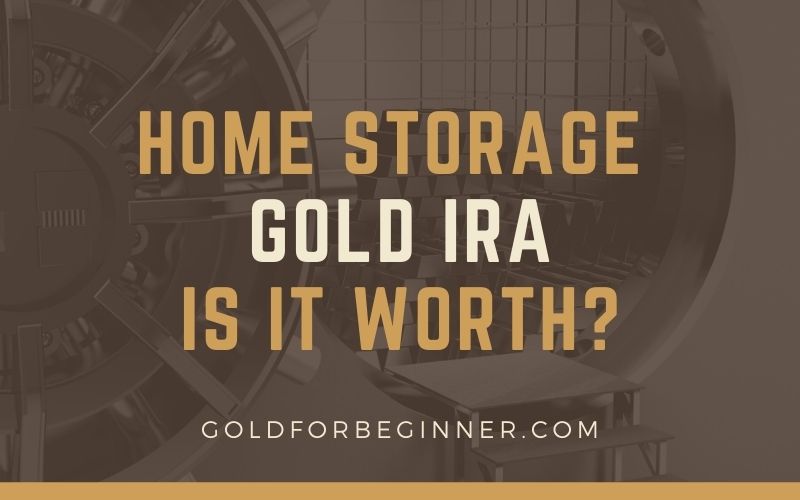
Home Storage Gold IRA: Is It Worth the Risk?
The economic uncertainties are driving the popularity of Precious Metals IRA, specifically Gold IRA. Taking advantage of this trend, many gold dealers are running advertisements
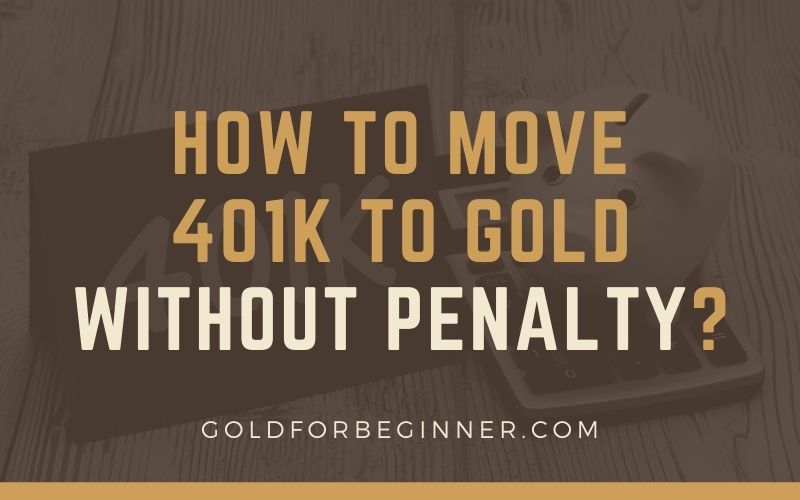
How to Move 401k to Gold Without Penalty?
Gold is the go-to investment option for people from all walks of life, especially in times of crisis. The reason for this is simple enough.

